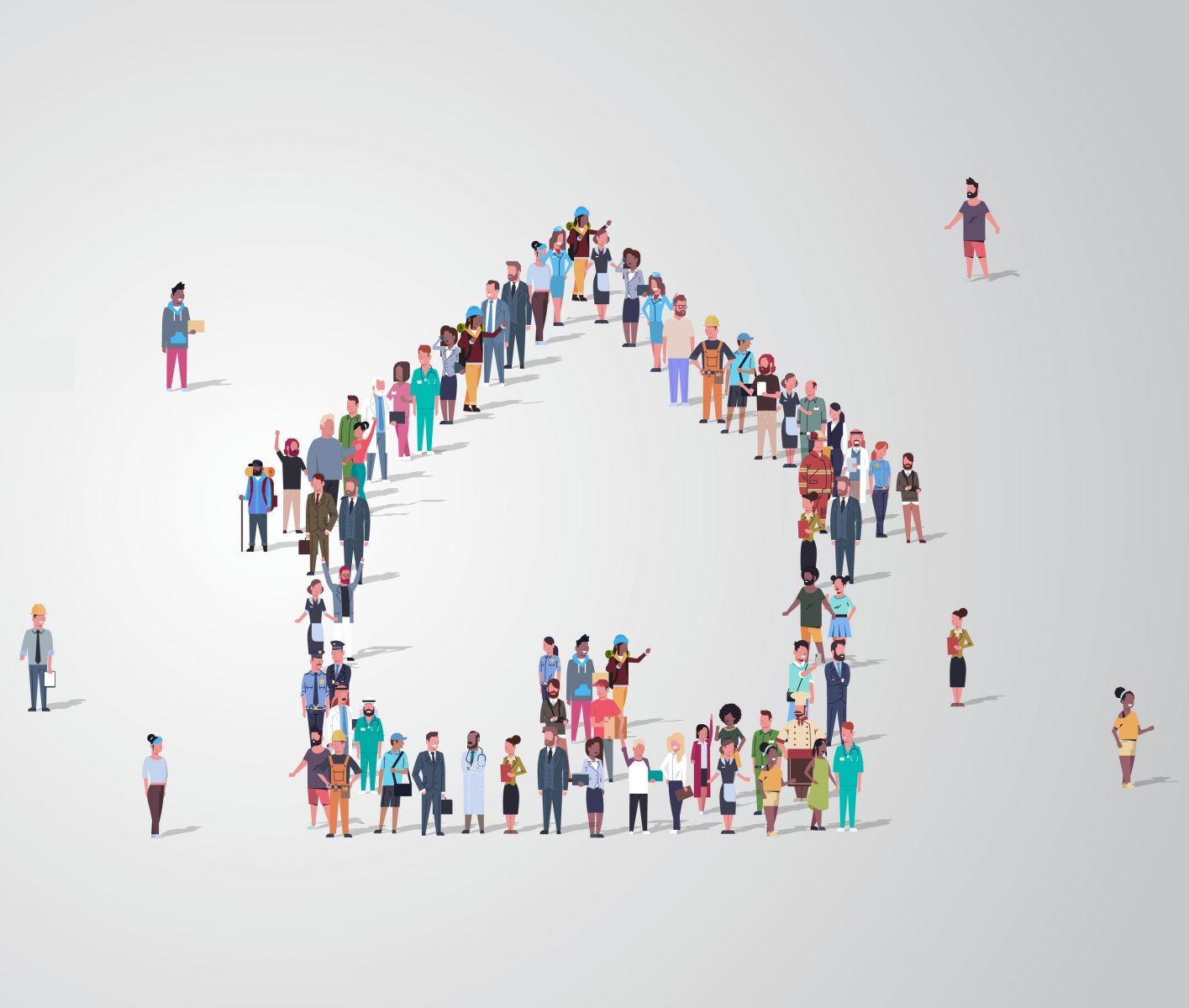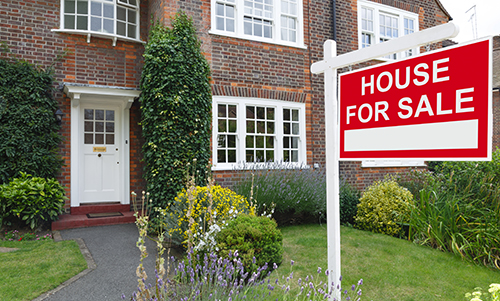This project is trying to reverse gentrification by bringing people back to the Seattle Central District
Posted on August 15, 2020
 When Andrese Collins bumps into people he grew up with in the Central District, the conversation always starts the same way: “Where you’d go?”
When Andrese Collins bumps into people he grew up with in the Central District, the conversation always starts the same way: “Where you’d go?”
Most of his childhood acquaintances have moved away as Seattle’s historic Black neighborhood has changed and become more expensive — to places like Kent, Everett and Federal Way. Collins and his grandmother relocated to South Seattle when he was in high school, leaving behind the playground where he made friends and the stores where his grandmother liked to shop.
“A lot of us have moved south or north,” the 24-year-old said. “That makes it harder to stay in touch. We don’t see each other that much anymore.”
But the Central District remains special to Collins, so he was intrigued when he heard about subsidized apartments opening up this year at a new housing complex at 23rd Avenue and South Jackson Street: 74 rent-capped units, including half reserved for people with longstanding ties to the neighborhood.
Undertaken by a nonprofit called Community House (alongside a building for people with mental illnesses), Jackson Heights is the first Seattle project completed under a new City Hall policy that encourages developers to combat gentrification by choosing residents with community connections.
Similar policies were established long ago in other major cities, and the idea has gained traction here after the tech boom sent housing costs soaring.
The Black Lives Matter movement is adding momentum, with protesters decrying the redlining and racially restrictive covenants that once obstructed Black people from building wealth and living beyond the Central District — as well as the development policies and socioeconomic forces that later pushed many out of the neighborhood.
Dozens of religious leaders cited Black Lives Matter last month as they called on City Hall to fund 1,000 units in the Central District for displaced residents. A coalition called King County Equity Now is demanding that public properties in the neighborhood be handed over for development by Black-led community organizations.
The City Council voted Monday to use $18 million annually from a new tax on big businesses for “community preference” housing, starting in the Central District; Councilmember Kshama Sawant lobbied for the allocation, while Councilmember Debora Juarez championed an amendment ensuring other revenue from the tax will be used to distribute housing across the entire city.
At Jackson Heights, the initial interest was immense. More than 850 people entered a lottery for the preference units. The building opened in April.
The applicants had to meet income qualifications and to provide documents (such as a bank statement, tax bill, death certificate or voter registration) showing they or an immediate relative lived in the Central District before 2000; Collins asked his grandmother for records related to their old house.
“I was surprised there was a program like this,” said Collins, a Washington State University graduate who was staying with his grandmother again when he applied for an apartment. “A lot of people were talking about it.”
New narrative
The push for Seattle’s community preference policy started in 2017, when another nonprofit opened a building in the Chinatown International District. Worried about gentrification there, InterIm Community Development Association reserved some units for applicants from certain ZIP codes.
The idea raised questions, because fair-housing laws prohibit practices that contribute to segregation or disadvantage protected groups. Other cities have been sued over preference policies. In New York City, affordable housing mostly built in poor areas has arguably reinforced divides. That’s why advocates contend cites must build affordable housing everywhere, including in rich areas.
Faced with those variables, InterIm asked City Hall for assistance. Approved last year, Seattle’s preference policy says developers can prioritize applicants with neighborhood links, as long as they use guidance to make sure they adhere to fair housing laws.
The policy can be used only on a case-by-case basis in areas at risk for displacement, with the aim to restore or retain diversity, said Emily Alvarado, Seattle’s housing director. Developers still can’t screen based on race. For example, not all community preference residents at Jackson Heights are Black.
“The underpinning of fair housing is making sure that people have choices,” Alvarado said in an interview. “We want people to be able to choose to stay.”
Financed with about $9 million from City Hall and more than $20 million from other sources, Jackson Heights created buzz partly because Community House contracted with a Central District organization to market the building.
Africatown Media posted on Twitter and Facebook, made YouTube videos, sent text messages and answered calls. The team visited churches in the outlying cities where many previous Central District resident have ended up.
Collins heard about Jackson Heights from relatives and Facebook. He wanted to move closer to his job, at the Nike store downtown.
“You have to meet people where they’re at,” said Omari Salisbury, a media entrepreneur who led the marketing team. “Some people in our community only read the paper. Some people are only on the phone. Some people get the news they trust from the barbershop or beauty salon.”
The work was personal for Salisbury, 44, who grew up in the area and has watched it change. The beloved Red Apple supermarket at 23rd and Jackson was bulldozed by Paul Allen’s real estate company in 2018 to make way for a massive new complex with more costly housing. Jackson Heights replaced a decades-old flower shop and some other small businesses.
The area’s construction surge has disoriented some seniors, disrupting their routines and making them uneasy in their own neighborhood, Salisbury said.
“That’s why advertising Jackson Heights was empowering,” Salisbury added. “We were able to knock back the narrative that the CD has no more Black people; the narrative that Black people don’t want to live here anymore.”
Rare opportunity
Jackson Heights rises seven stories above 23rd Avenue. Community House has reserved street-level retail spaces for a child care center and a restaurant.
During a tour earlier this year, potential residents clustered on the building’s roof deck, blown away by the view. The Central District’s residential blocks, way down below, looked like Mister Rogers’ Neighborhood. In interviews, the applicants shared multiple reasons for wanting to live at Jackson Heights.
For Tiffany Flye, 30, the building represented a chance to stand up against gentrification. The Franklin High School graduate bounced from South Seattle to Renton and Beacon Hill after her childhood home was sold in 2007.
The Central District‘s Black history dates to the 1800s, and the neighborhood was nearly 75% Black in 1970. Today, the Black population is closer to 15%. Some people moved by choice; many were displaced.
“I honestly do think we were pushed out, for various reasons,” Flye said, describing Jackson Heights as a “Band-Aid” on those wounds. “I make decent money, but with all the Amazon people living here now and no rent control, I can’t afford to pay (market rent) in the Central District.”
Stephanie Richardson applied for a unit at Jackson Heights partly to reduce her bus commute between her Renton home and her downtown Seattle job.
“It takes me about an hour and 10 minutes each way,” the 59-year-old said, shrugging her shoulders. “I’m so tired when I get home, I just go lay down.”
For Luther Mitchell-Walker, the building represents hope.
The 34-year-old was jobless, homeless and struggling to cope with the death of a grandmother in April when he landed a social-worker position at the Community House complex for people with mental illnesses.
Then his boss mentioned Jackson Heights. Some units were still vacant, because the COVID-19 economic crisis caused many initial applicants to change their plans, Community House Executive Director Chris Szala said.
Mitchell-Walker was born in the Central District; his mother and father grew up across the alley from each other. He and his mother moved to North Seattle when he was a small child, but he spent his childhood in touch with the area, visiting his grandparents and attending Washington Middle School.
He said he teared up when he brought his mother to see his apartment and heard her say she was proud to see him back in the Central District.
“I’ve been through so many ups and downs,” Mitchell-Walker said. “I never thought I would have an apartment here. It’s like a dream come true.”
Neighborhood memories
Precious memories contribute to the Central District’s enduring pull.
Flye can still picture herself riding her bike to Judkins Park with other kids, stopping at Parnell’s Mini-Mart for snacks and mingling with the crowds at Umoja Fest, an African American community celebration held every summer.
“Growing up, I saw people who looked like me in my neighborhood,” she recalled, saying some familiar faces have popped up at Jackson Heights, where she now lives. “There were a lot of family ties. Everybody knew everybody.”
Richardson is older, but she talked about the neighborhood in a similar way, mentioning the treasured sour candies she used to buy at Jordan’s Drugs and the drill team she marched with, in their black and white uniforms.
“Every year, a major African American speaker would come to the parade and speak to the community,” like Jim Brown and actress Denise Nicholas, she said.
When Mitchell-Walker was a child, the Central District represented stability. His grandparents, like many in their generation, owned their homes there.
“My maternal grandmother worked so hard. She was a cook for the white people in Madison Park,” said Mitchell-Walker, whose world was shaken when that grandmother later had to sell her house to make ends meet.
King County’s Black homeownership rate has dropped from 49% to 28% since 1970, with changes in the Central District playing a substantial role.
The sense of community is what Collins misses most. Playing at Madrona Park. Knowing everyone on his block. “It was pretty smooth,” he said.
Now the block is prime real estate: Three newly built, 4,000-square-foot houses sold last year for $2 million each.
Initially selected in the Jackson Heights lottery, Collins lost out at the last minute when he added his girlfriend to his application. The annual maximum income for two people was about $53,000, and they made slightly too much.
The couple pivoted, moving instead to an apartment in Tukwila. Their rent is a bit more than they would have paid for a subsidized unit at Jackson Heights, so Collins is looking for a second job.
He likes their new home, and he’s happy to be writing his next chapter there.
“At the same time, I still would love to live back in my old neighborhood,” he said. “Whenever the time is right.”
Daniel Beekman: 206-464-2164 or dbeekman@seattletimes.com; on Twitter: @dbeekman. Seattle Times staff reporter Daniel Beekman covers Seattle city government and local politics.
SEE ALSO:
More Race Relations Articles
Sexual Bias Articles
Mental Health Articles
How Drugs and Alcohol Affect the Brain and Body
WA. Counselor Directory: find a therapist near you
How helpful is this web page to you?
(and how can we can improve this page for you?)
not helpful
very helpful
Other Articles
Black homeowners face discrimination in appraisals
Companies that value homes for sale or refinancing are bound by law not to discriminate. Black Homeowners say it happens anyway.
Abena and Alex Horton wanted to take advantage of low home-refinance rates brought on by the coronavirus crisis. So in June, they took the first step in that process, welcoming a home appraiser into the... read more


